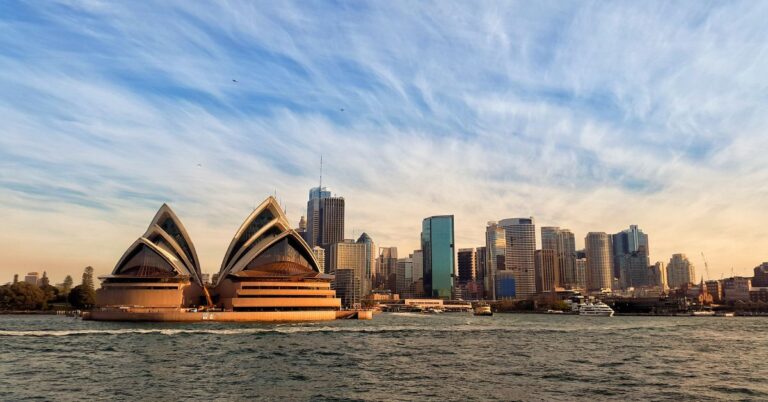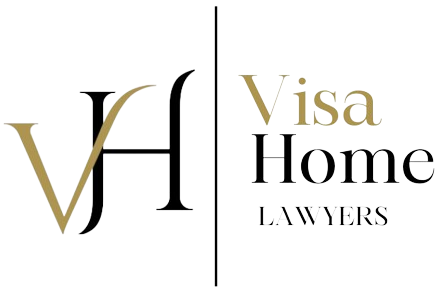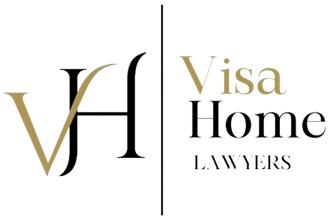Safe haven enterprise visa
(subclass 790)
Home » Safe Haven Enterprise Visa (subclass 790)
Safe haven enterprise visa is specifically designed for individuals who have arrived in Australia without a visa and are seeking asylum. It allows them to stay in Australia temporarily provided they fulfill Australia’s protection obligations and meet all other criteria necessary for the visa’s approval. This visa acknowledges the need for protection and provides a legal framework for individuals seeking asylum in Australia.

The visa allows individuals to:
- Stay in Australia temporarily for a period of 5 years.
- Work and study during their stay.
- Access government services such as Centrelink.
- Engage Australia’s protection obligations or be a member of the same family unit of someone who does.
- Fulfill all other visa requirements including those related to health, character, identity, and security.
- Sign a declaration on the application form indicating the intention to work or study in regional Australia.
With safe haven enterprise visa you can
- Live, work, and study in Australia temporarily for a period of 5 years.
- Access government services such as jobactive, Medicare, and Centrelink services.
- Access short-term counseling for torture and trauma when required.
- Attend English language classes for free if eligible.
- Travel overseas to countries other than their home country if they obtain written approval from the Australian authorities due to compassionate or compelling circumstances.
- Apply for certain other visas in Australia, including permanent visas such as skilled and family visas, but not a permanent Protection visa, if they meet the Safe Haven Enterprise visa pathway requirements.
How long you can stay
This visa is temporary, allowing individuals to remain in Australia for a duration of 5 years.
Stay longer
Suppose the visa is granted on or after February 14, 2023. In that case, you must apply for a subsequent Safe Haven Enterprise visa (SHEV) or a Temporary Protection visa (TPV) before your current SHEV expires, provided you still require Australia’s protection. You are not subject to any application bars.
Additionally, SHEV and TPV holders, as well as former holders who arrived in Australia before February 14, 2023, may qualify to apply for a permanent Resolution of Status (RoS) visa (subclass 851).
Moreover, you might be eligible to apply for certain other visas in Australia, such as skilled and family visas, but not a permanent Protection visa, if you satisfy the Safe Haven Enterprise visa pathway requirements and the specific prerequisites for each visa category.
Apply from
You, along with any family members included in your application, must be physically present in Australia at the time you submit your application for this visa.
Including family members
Members of the same family unit, including spouses, dependent children, and other dependent relatives, may apply together on the same application for this visa. However, they must all be present in Australia at the time of application and meet the eligibility criteria. The family head, who can be you or another eligible family member, must not have applied for this visa separately.
Dependent children are defined as those under 18 years old, but those over 18 may also qualify if they are incapacitated for work or wholly or substantially reliant on their parent or step-parent for support.
Other dependent relatives may include parents, siblings, grandparents, grandchildren, aunts, uncles, cousins, nieces, nephews, or step equivalents who live with and rely on the family head for support.
All members of the same family unit applying for this visa must also meet the health, character, and security requirements.
Newborn child
If a child is born to you after you have submitted your visa application and before a decision is made, the child will be considered part of your application. You must promptly inform the authorities by completing Form 1022, providing a clear color copy of the child’s original birth certificate, and submitting it through ImmiAccount or by mail to the designated address.
Children born in Australia to visa applicants automatically receive the same visa status as their parents at the time of birth. Additionally, if either parent is an Australian citizen or permanent resident when the child is born, the child may acquire Australian citizenship by birth. Further details on the requirements for evidence of Australian citizenship can be found through appropriate channels.
Processing times
Estimates of processing times for the Safe Haven Enterprise Visa (SHEV) can range from 12 to 24 months. However, please note that these times are indicative and may vary depending on individual circumstances.
Efforts are made by the Department of Home Affairs to finalise SHEV applications as promptly as possible. However, due to the complexity of the process, some time may be required. Applicants can expedite the process by ensuring they provide accurate information, include all necessary documents, respond promptly to any requests for additional information, and cooperate with verification procedures. Delays may occur if applications are incomplete, require additional information, or if there are delays in verifying provided information.
Fast track assessment process
Under the Fast Track Assessment process, applications for Temporary Protection Visa (TPV) and Safe Haven Enterprise Visa (SHEV) will be evaluated for individuals who meet specific criteria:
Unauthorised Maritime Arrival: Applicants who arrived in Australia without proper authorization.
Arrival Period: Individuals who entered Australia between August 13, 2012, and January 1, 2014.
No Regional Processing Country: Applicants who have not been transferred to a regional processing country.
Additionally, all subsequent TPV and SHEV applications submitted on or after April 2, 2019, will be subject to the Fast Track Assessment process. However, the Minister reserves the right to assess other applicants under this process as well.
The fast track process for enterprise visa
The Fast Track Assessment process aims to streamline and enhance the efficiency of visa applications for individuals seeking protection in Australia. If the Department has any inquiries or reservations regarding your protection claims or provided information, they will afford you the chance to address them.
You’ll typically have a limited timeframe to respond either in writing or through an interview. It’s crucial to provide any requested information or address concerns promptly within the specified deadlines to facilitate the decision-making process on your application.
Review rights
Under the Fast Track Assessment process, access to merits review by the Administrative Review Tribunal (ART) is generally not available, except in cases where a Safe Haven Enterprise visa (SHEV) is refused on character grounds.
Upon refusal of your SHEV application, the refusal letter will outline your merits review options:
Excluded fast track review applicants
You may be classified as an excluded fast track review applicant if you meet any of the following criteria:
- You have access to a safe third country where you can seek protection, or you are a national of two or more countries.
- You entered Australia before and, while in Australia, applied for a protection visa, which was either refused or withdrawn.
- You were refused protection in another country, including with the United Nations High Commissioner for Refugees (UNHCR).
- You made ‘manifestly unfounded’ claims for protection, meaning your claims have been deemed to have no substance.
- You provided a bogus document as part of your protection visa application without a reasonable explanation.
If it is determined that you fall into one of these categories, you will be notified and given an opportunity to provide additional information or comment before a decision is made. If you are indeed classified as an excluded fast track review applicant and your SHEV application is refused, you may not be able to seek merits review of that decision.
Your obligations
As a holder of a Safe Haven Enterprise visa (SHEV), you and your family members included in your application must adhere to all visa conditions and abide by Australian laws.
One of the unique features of the SHEV is that it allows you the flexibility to live, work, or study anywhere in Australia. Unlike some other visas, there are no penalties if you choose not to live, work, or study in a SHEV regional area.
However, it’s important to note that if you do not fulfill the work or study requirements in a SHEV regional area, you may still be eligible to apply for another SHEV or a Temporary Protection visa if you require Australia’s protection.
Make sure to review the specific conditions that apply to your visa to ensure compliance.
Travel
If you hold a Safe Haven Enterprise visa (SHEV), there are specific conditions related to travel that you must adhere to:
Waiting for your SHEV application to be decided: If you leave Australia before your SHEV application is decided, your bridging visa will expire, and you will not be permitted to re-enter Australia until a decision is made on your SHEV application.
If you hold a SHEV: If your SHEV application is approved, visa condition 8570, known as Restricted travel, applies to your visa.
Restricted travel (Visa condition 8570): This condition prohibits you from traveling to your home country under any circumstances. Additionally, you are only allowed to enter any other country if you have compassionate or compelling reasons for travel and have obtained written approval from the Department of Home Affairs before leaving Australia.
Consequences of unauthorized travel: Traveling overseas without the Department’s written approval will result in a breach of visa condition 8570. As a consequence, your SHEV (and the visas of any accompanying family members) may be cancelled while you are offshore.
It’s essential to understand and comply with these travel conditions to avoid any potential issues with your visa status.
Visa label
Your visa will be digitally linked to your travel document or ImmiCard. This means that instead of receiving a physical label in your travel document, the details of your visa will be electronically stored and accessible through the Department of Home Affairs’ systems. This digital linking ensures ease of verification and reduces the need for physical labels, providing a more efficient and streamlined process for both visa holders and immigration authorities.
Meeting the SHEV pathway requirements
The Safe Haven Enterprise Visa (SHEV) offers the opportunity for work or full-time study in designated regional areas. Engaging in work or study in these areas can contribute towards meeting the requirements for certain other visas in Australia, excluding a permanent Protection visa. However, it’s important to note that there are no penalties if you choose not to live, work, or study in these regional areas.
If you opt not to engage in work or study in a SHEV regional area, you won’t fulfill the SHEV pathway requirements for applying for other visas. In such cases, you’ll still have the option to apply for another SHEV or a Temporary Protection visa if you continue to require Australia’s protection and are not subject to any application bars.
Withdraw your application
If you hold a bridging visa and decide to withdraw your Safe Haven Enterprise Visa (SHEV) application before a decision is made, there are some implications to consider. You may potentially be barred from applying for another SHEV or a Temporary Protection visa. Additionally, your bridging visa will expire 35 days after the withdrawal of your application.
To withdraw your SHEV application, you must submit a written request. This request should include your full name, date of birth, and details of the application you wish to withdraw. If there are any additional applicants who are 18 years of age or older, they must also sign the letter of withdrawal or send a separate email or letter to withdraw their application.
Eligibility
Arrived in Australia illegally
If you entered Australia without a valid visa or were not immigration cleared upon arrival, your eligibility for certain visa types may be restricted. Specifically, you may only be eligible to apply for a Temporary Protection visa (TPV) or a Safe Haven Enterprise visa (SHEV). It’s important to note that you cannot apply for a permanent Protection visa (subclass 866) under these circumstances.
To apply for a Safe Haven Enterprise visa (SHEV), you must meet the following criteria:
- Be unable to make a valid application for a permanent Protection visa (subclass 866).
- Fall into one of the following categories:
- Be an unauthorised maritime arrival.
- Have not been immigration cleared at Australia’s border during your last entry into the country.
- Have entered Australia without a valid visa.
- Hold or have held one of the following visas:
- Temporary Protection visa (subclass 785)
- Temporary Safe Haven visa (subclass 449)
- Temporary (Humanitarian Concern) visa (subclass 786)
- Safe Haven Enterprise visa (subclass 790)
Be a refugee or satisfy Australia’s complementary protection criteria
As per the definitions outlined in the Migration Act 1958 (Migration Act), you must meet one of the following criteria to be eligible for a protection visa:
Refugee Status: You must demonstrate that you meet the definition of a refugee as outlined in international law. This means showing that you have a well-founded fear of persecution in your home country due to reasons such as race, religion, nationality, membership in a particular social group, or political opinion.
Complementary Protection Criteria: Alternatively, if you do not qualify as a refugee but still face a real risk of significant harm if returned to your home country, you may be eligible for complementary protection. This could include situations where you would face the death penalty, torture, or other forms of cruel, inhuman, or degrading treatment or punishment if returned.
It’s important to note that Australia has obligations under international law not to return individuals to their home country if there is a substantial risk that they would face persecution or significant harm there. Therefore, your application for a protection visa will be assessed based on these criteria to ensure compliance with Australia’s protection obligations.
Identity requirements
As part of your application for a protection visa, you may need to submit documents to verify your identity, nationality, or citizenship. It’s essential to cooperate and provide these documents promptly to facilitate identity checks. Additionally, you may be asked to provide biometrics, such as fingerprint scans and a digital photograph of your face, if this information hasn’t been provided previously.
The information collected about your identity will be utilized during the assessment of your protection claims, as well as during character and security checks. Therefore, it’s crucial to ensure that all identity-related documentation and biometric data are provided accurately and in a timely manner to support your visa application process.
Not be barred from lodging a SHEV application
To be eligible for a Safe Haven Enterprise (SHEV) visa, you must meet certain criteria. However, there are circumstances where you may not be able to make a valid SHEV application. These include if you:
- Are an unauthorised maritime arrival,
- Were immigration cleared when you arrived in Australia,
- Have been refused a protection visa since your last arrival to Australia,
- Have had a protection visa cancelled since your last arrival to Australia,
- Hold or held a Humanitarian Stay (Temporary) (subclass 449) visa since last entering Australia,
- Are a transitory person.
It’s important to note that the Minister has the authority to lift any application bar if it’s deemed to be in the public interest. You will be notified if an application bar affects your SHEV application, and any relevant updates regarding this matter will be communicated to you accordingly.
Security requirements
As part of the application process for a Safe Haven Enterprise Visa (SHEV), the Australian government conducts an assessment to ensure that applicants meet the country’s security requirements. This assessment is crucial for the grant of the visa and involves evaluating various factors related to security concerns.
Health requirement
As part of the visa application process for the Safe Haven Enterprise Visa (SHEV), applicants are required to undergo health examinations. These examinations are necessary to ensure the health of both the applicant and the broader Australian community. Bupa Medical Visa Services conducts these health examinations.
Upon lodging the visa application, applicants will receive a health identifier (HAP ID) along with instructions on how to arrange their health examinations. These examinations are essential steps in the visa assessment process.
Character requirement
You must meet certain character requirements to be eligible for the visa.
The Australian values statement
If you are 18 years of age or older, you must confirm that you have read, or had explained to you, the Life in Australia booklet, and you must agree to respect the Australian way of life and obey Australian laws when you sign or accept the Australian Values Statement.

